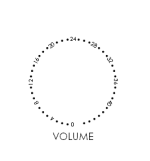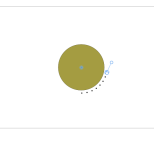A CNC milling machine would also do the trick.
Use the "tabs" option in MasterCAM or High Speed Machining (HSM) for cutting the sheetmetal. You will still need to supply dimensioned drawing. Most shops around Albuquerque, NM have a minimum shop rate of $75/hour. Running a CNC milling machine, actual cutting the metal on a laser cutter/waterjet cutter can be done in well under one hour.
Use the "tabs" option in MasterCAM or High Speed Machining (HSM) for cutting the sheetmetal. You will still need to supply dimensioned drawing. Most shops around Albuquerque, NM have a minimum shop rate of $75/hour. Running a CNC milling machine, actual cutting the metal on a laser cutter/waterjet cutter can be done in well under one hour.
Put a piece of wood/aluminum between the clamps/sheetmetal. CNC machines are used all day everyday before laser cutters/waterjet/plasma cutters. Still used everyday.
Sand paper and files were invented to de-burr metal.
Sand paper and files were invented to de-burr metal.
I‘m late I know, and I suggest a commercial product, but in my opinion it’s just really good (though with a learning curve): try affinity designer https://affinity.serif.com/de/designer/
Whatever typographic wet dreams you‘d wish for…
Whatever typographic wet dreams you‘d wish for…
If you have had to mirror polish a stainless steel sheet, which is done regularly in orthopedic implant factories, you will know how much effort it takes.
Best that the least marks are made in the first place.
By the way, I sometimes make molds for plastic injection molding, I have a degree in Mechanical Engineering.
I am familiar with all these issues.
Best that the least marks are made in the first place.
By the way, I sometimes make molds for plastic injection molding, I have a degree in Mechanical Engineering.
I am familiar with all these issues.
Last edited:
That is quite rare, really.
Most engineers here barely now right from left.
I recognize you as a peer, as I also make the things I designed, or get them made to my requirements.
Most engineers here barely now right from left.
I recognize you as a peer, as I also make the things I designed, or get them made to my requirements.
I do most of my own custom work, I fabbed the dash insert and the radio panel already. Its only small circular cuts I'm not equipped to do on stainless steel at home as its as hard as..(fill in blank yourselves🙂 I probably could but those would take me 10x longer. I tried a circular saw bit, already doubting it prior. It hardly makes a decent scratch on the high grade stuff."gta is Greater Toronto Area? If so, Toronto is near many auto manufacturing/parts business/machine shops/sheet metal shops.
I looked on Yelp Canada, there are dozens of sheet metal fabricators in the Toronto area. That part of the world, there shouldn't be any problem finding someone to fabricate a stainless steel dash, but as mentioned, you'll need a drawing with dimensions. On the Omax water jet cutter I used to have access to, a pencil and paper drawing can easily be drawn with the CAD software on the machine controller.
Right theres an abundance of shops. Just a few years back cost may of been objective for smaller guys.
I'm trying out Affinity 2. Its impressive but can it accomplish particular arrangements.. There's a lot to decipher. Placing small circles(dots) "precisely" on a circle snapped at 7.5deg is a challenge at this point in time..The simple protractor and arc tool in sketchup make it easy as shown in attachment.
Interesting that Affinity auto imported all of my existing saved vector files, and I can now view them in the Affinity program.. The clarity, sharpness and resolution is amazing where I can see, much more clearly, the differences between line thicknesses and hidden lines, etc, of files created by different programs.
Thanks for suggesting Affinity!
Interesting that Affinity auto imported all of my existing saved vector files, and I can now view them in the Affinity program.. The clarity, sharpness and resolution is amazing where I can see, much more clearly, the differences between line thicknesses and hidden lines, etc, of files created by different programs.
Thanks for suggesting Affinity!
Attachments
So you know, you can move the rotation origin, and specify the degrees of rotation in a dialog box. The Duplicate command remembers the last displacement. So another way to achieve a circle of dots is:
draw dot,
move rotation origin to center of knob,
duplicate,
change duplicate rotation angle to 7.5 degrees (separating the dots),
duplicate, duplicate, duplicate… adding all the dots around the circle,
select and cut unused dots.
of course the same trick works for bars, numbers, etc.
draw dot,
move rotation origin to center of knob,
duplicate,
change duplicate rotation angle to 7.5 degrees (separating the dots),
duplicate, duplicate, duplicate… adding all the dots around the circle,
select and cut unused dots.
of course the same trick works for bars, numbers, etc.
Affinity 2 is WYSIWYG (what you see is what you get). It’s friendly.
Some might prefer to specify in written code what they want, instead of drawing it. For them, a 3D design software like OpenSCAD - free and well supported - may be another option. You write in OpenSCAD language what you want, and hit “Preview” to visualize the result. Changing 7.5 degrees for 10 degrees (playing what if) can then be as simple as changing a number in the provided editor and clicking Preview.
Some might prefer to specify in written code what they want, instead of drawing it. For them, a 3D design software like OpenSCAD - free and well supported - may be another option. You write in OpenSCAD language what you want, and hit “Preview” to visualize the result. Changing 7.5 degrees for 10 degrees (playing what if) can then be as simple as changing a number in the provided editor and clicking Preview.
I always toggle between awe of what Affinity Designer "can" (What's possible to achieve) and shock of what I can (what I am capable to do with it)

It really is incredible, but oftentimes the seemingly easiest things are either hidden behind the wall of learning curve or not possible at all.
If you're going to work on complex front plates (or other drawings), I recommend to adopt a well thought layer concept, as it again is very useful or, if not properly used, quite cumbersome.

It really is incredible, but oftentimes the seemingly easiest things are either hidden behind the wall of learning curve or not possible at all.
If you're going to work on complex front plates (or other drawings), I recommend to adopt a well thought layer concept, as it again is very useful or, if not properly used, quite cumbersome.
So you know, you can move the rotation origin, and specify the degrees of rotation in a dialog box. The Duplicate command remembers the last displacement. So another way to achieve a circle of dots is:
draw dot,
move rotation origin to center of knob,
duplicate,
change duplicate rotation angle to 7.5 degrees (separating the dots),
duplicate, duplicate, duplicate… adding all the dots around the circle,
select and cut unused dots.
of course the same trick works for bars, numbers, etc.
WOW, thank you. Looks like I'll be paying to keep Affinity after 30 day trial.
Google layout now appears primitive to me and it is $300 per year after trial period
Attachments
- Home
- Design & Build
- Software Tools
- Software for faceplate etching

